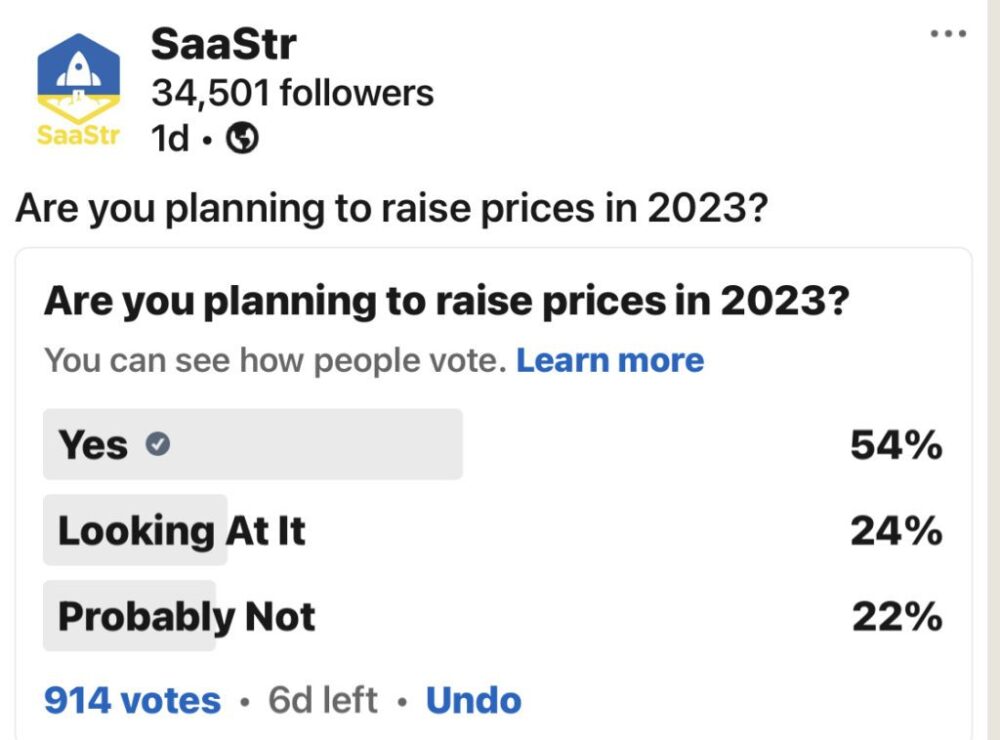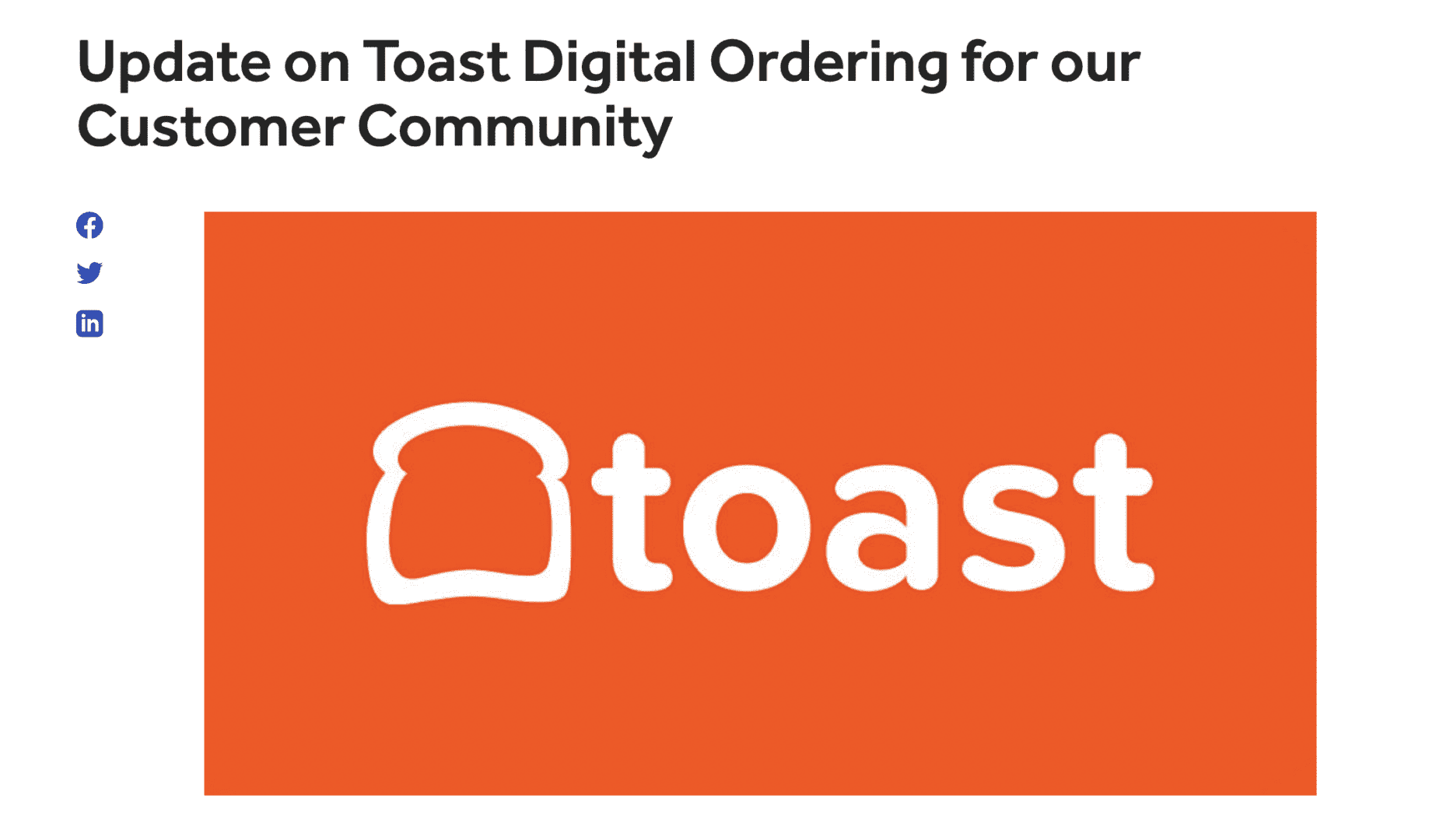So price increases have been the name of the game in SaaS for the past 12 months, in many (not all) cases to help make up for slowing growth:
- Zendesk up 16%
- Salesforce up 9%
- Google Workspace up 20%
- HubSpot up 12%
- Webflow up 16%
- Shopify up 33%
- Slack up 10%
And some of them like Slack and Salesforce hadn’t raised list prices in quite some time. 2022/2023 was the year!
On the start-up side, last year most of you said in fact you were planning to raise prices in 2023 — and you did 😉
What did we learn from so many SaaS leaders raising prices — in many cases, a lot? Well, we learned for the most part there was a lot of price inelasticity. Churn didn’t go up much at all, and the customer base absorbed the price increases.
But it can’t last forever. You can’t raise and raise forever, at some point the elasticity hardens.
And one of the first to see it was Toast. Toast added a $0.99 fee to orders of $10 or more. Now that may not sound like a lot, but Toast’s margins are lower than a pure-play software vendor, and the impact to the bottom line and net margins would have been huge.
What happened? The customers revolted. And while there are other options than Toast, Toast is clearly #1 in its category. And yet, Toast had to back down:
“While we had the best of intentions—to keep costs low for our customers—that is not how the change was perceived by some of you,” CEO Comparato said. “We made the wrong decision and following a careful review, including the additional feedback we received, the fee will be removed from our Toast digital ordering channels.”
Certainly, you could argue this is a different type of price increase than Slack, given how Toast operates in effect as a partial marketplace. And that it sells to SMBs. And you can argue it’s more a B2B2C than most on the list.
But it’s at least a sign to take a pause. Yes, there is more price elasticity in SaaS than we thought. But it’s not unlimited.
At some point, the customers wiil revolt. Quietly with their wallets, or in the case of Toast, Loudly.
(enough already image from here)



